The automotive landscape has seen an incredible shift towards electrification, with two standout models in the compact electric SUV segment: the Audi Q4 e-tron and the CUPRA Tavascan. Both vehicles showcase impressive technology, performance, and design, but which one is better suited to your needs? Let’s dive into a detailed comparison of these two electric contenders.
Audi Q4 e-tron vs CUPRA Tavascan – Which car suits you better?
Everyday use, family trips or long-distance drives – here’s where the differences show.
Discover whether Audi Q4 e-tron or CUPRA Tavascan fits your lifestyle better.
Design and Dimensions
Starting with design, both the Audi Q4 e-tron and the CUPRA Tavascan boast modern aesthetics that appeal to eco-conscious buyers without sacrificing style. The Audi presents a sophisticated and elegant silhouette, while the Tavascan leans into a sportier, more aggressive vibe.
In terms of dimensions, the Q4 e-tron measures 4588 mm in length, 1865 mm in width, and stands at a height of 1632 mm. The Tavascan, on the other hand, is slightly longer at 4644 mm, with a width of 1861 mm and a lower height of 1597 mm. The additional length of the Tavascan adds to its dynamic appearance while enabling a trunk capacity of 540 liters compared to Q4’s 520 liters.
Powertrain and Performance
Both vehicles offer a suite of electric powertrain options that cater to varying performance needs. The Q4 e-tron provides a range of power outputs starting from 170 HP and going up to an impressive 340 HP. In comparison, the CUPRA Tavascan also offers similar power ratings—286 HP and 340 HP but showcases impressive efficiency with its consumption figures, achieving as low as 15.2 kWh/100 km, compared to the Q4’s best of 15.9 kWh/100 km.
When it comes to acceleration, the Tavascan takes a slight edge with a time of 5.5 seconds to reach 100 km/h for its top-performing variant, while the Q4 e-tron can achieve this in 5.4 seconds in its most powerful configuration. Both models reach a top speed of 180 km/h, making them competent players in the electric SUV segment.
Battery and Range
Battery capacity is a crucial factor for electric vehicles, and both the Q4 e-tron and Tavascan come with a 77 kWh battery option. The Q4 e-tron offers an electric range up to 554 km, while the Tavascan slightly edges it out with a maximum range of 568 km. This extended range makes the Tavascan a compelling option for those prioritizing distance on a single charge.
Technology and Interior
Inside, both vehicles reflect their respective brand philosophies. The Q4 e-tron speaks to Audi's luxurious feels with high-quality materials and cutting-edge technology, including a fully digital cockpit and advanced infotainment system. The CUPRA Tavascan, while sporty in nature, brings a driver-focused interface with its own set of tech enhancements, reflecting a more energetic spirit, but without skimping on comfort or connectivity.
Both models offer ample cargo space, making them practical choices for families or those needing to transport larger items. The Tavascan’s trunk is slightly larger, providing an additional 20 liters of space compared to the Q4 e-tron.
Driving Experience
The driving dynamics of both SUVs cater to different tastes. The Q4 e-tron offers a more relaxed, comfortable ride akin to Audi's signature style. Meanwhile, the Tavascan offers a sportier experience with enhanced handling, thanks to its performance-oriented setup. Both vehicles feature advanced traction systems with options for rear-wheel and all-wheel drives, providing versatility for various driving conditions.
Final Verdict
Choosing between the Audi Q4 e-tron and the CUPRA Tavascan ultimately comes down to personal preference and specific needs. If you seek luxurious comfort along with a solid electric range, the Audi Q4 e-tron excels in those areas. However, if you prioritize sporty performance and a longer driving range with an exciting driving experience, the CUPRA Tavascan is the clear winner.
As the electric car market continues to grow, both models represent the remarkable innovations that manufacturers are implementing, ensuring drivers can choose between practicality and performance without compromise.
Here’s where it gets real: The technical differences in detail
Costs and Efficiency:
Price and efficiency are key factors when choosing a car – and this is often where the real differences emerge.
Audi Q4 e-tron has a somewhat advantage in terms of price – it starts at 39600 £, while the CUPRA Tavascan costs 45700 £. That’s a price difference of around 6163 £.
When it comes to electricity consumption, both models perform equally – each averaging 15.90 kWh per 100 km.
As for range, the Audi Q4 e-tron performs barely noticeable better – achieving up to 554 km, about 1 km more than the CUPRA Tavascan.
Engine and Performance:
Power, torque and acceleration say a lot about how a car feels on the road. This is where you see which model delivers more driving dynamics.
Both models deliver identical power – 340 HP each.
In acceleration from 0 to 100 km/h, the Audi Q4 e-tron is minimal quicker – completing the sprint in 5.40 s, while the CUPRA Tavascan takes 5.50 s. That’s about 0.10 s faster.
There’s no difference in top speed – both reach 180 km/h.
Both models offer the same torque – 679 Nm.
Space and Everyday Use:
Cabin size, boot volume and payload all play a role in everyday practicality. Here, comfort and flexibility make the difference.
Both vehicles offer seating for 5 people.
In curb weight, Audi Q4 e-tron is slight lighter – 2035 kg compared to 2178 kg. The difference is around 143 kg.
In terms of boot space, the CUPRA Tavascan offers barely noticeable more room – 540 L compared to 535 L. That’s a difference of about 5 L.
When it comes to payload, CUPRA Tavascan hardly perceptible takes the win – 522 kg compared to 515 kg. That’s a difference of about 7 kg.
Who comes out on top?
Overall, the Audi Q4 e-tron shows itself to be shows small but notable strengths and secures the title of DriveDuel Champion.
It convinces with the more balanced overall package and proves to be the more versatile choice for everyday use.
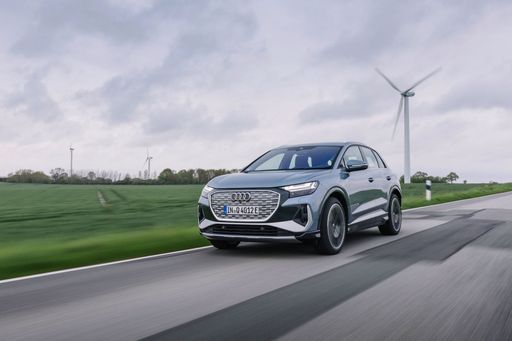 @ Audi AG
@ Audi AG
Audi Q4 e-tron
Audi Q4 e-tron
The Audi Q4 e-tron brings Audi polish into the electric crossover scene, pairing a sleek exterior with a refined, airy interior that makes everyday driving feel distinctly premium. It’s an easy-to-live-with EV that balances comfort and real-world usability with intuitive tech, making it a smart choice for buyers who want electric mobility without giving up Audi character — and yes, it still looks good in the driveway.
details @ Audi AG
@ Audi AG
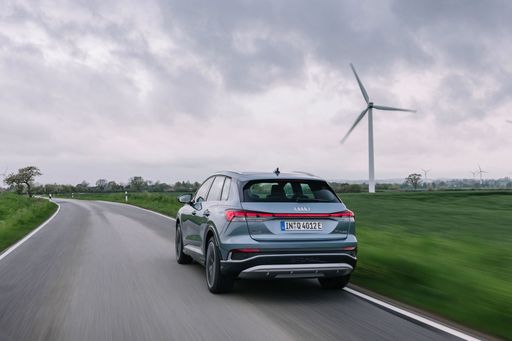 @ Audi AG
@ Audi AG
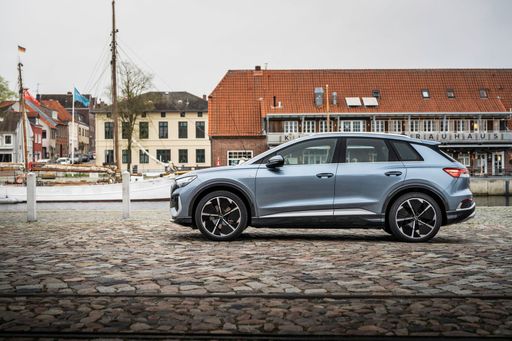 @ Audi AG
@ Audi AG
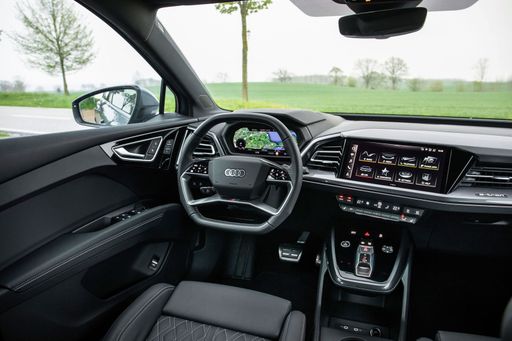 @ Audi AG
@ Audi AG
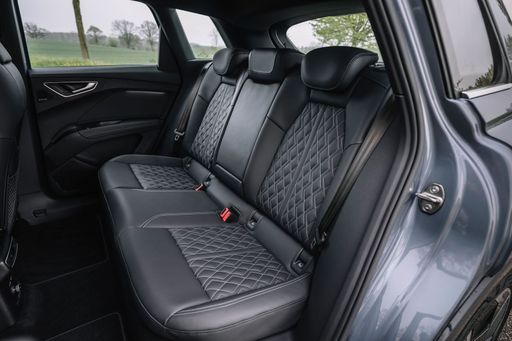 @ Audi AG
@ Audi AG
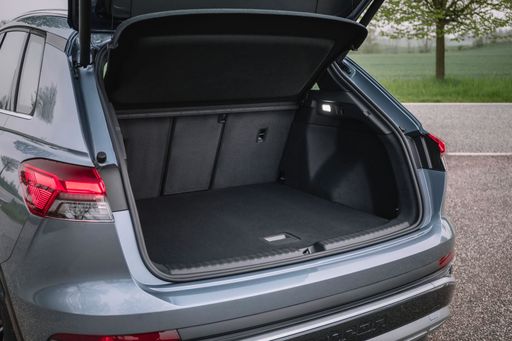 @ Audi AG
@ Audi AG
CUPRA Tavascan
The CUPRA Tavascan represents a bold step forward in the realm of electric vehicles with its striking design and dynamic performance. As the marque's first all-electric SUV, it combines athletic aesthetics with a commitment to sustainability. Inside, the vehicle offers a sophisticated and connected driving experience, ensuring that technology and comfort go hand in hand.
details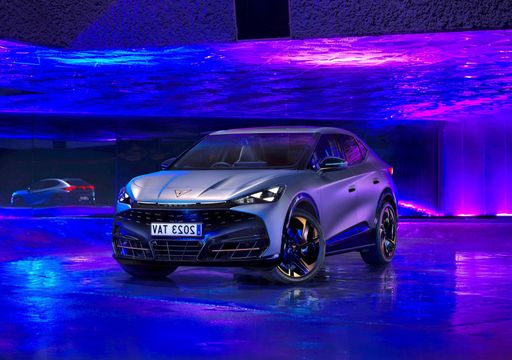 @ CUPRA / SEAT S.A.
@ CUPRA / SEAT S.A.
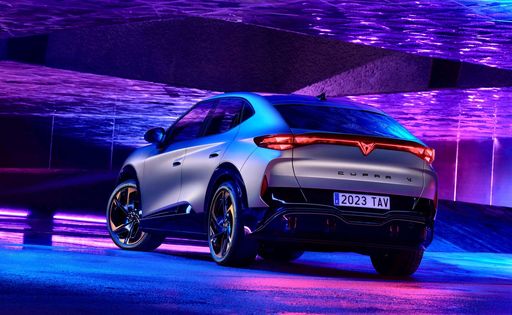 @ CUPRA / SEAT S.A.
@ CUPRA / SEAT S.A.
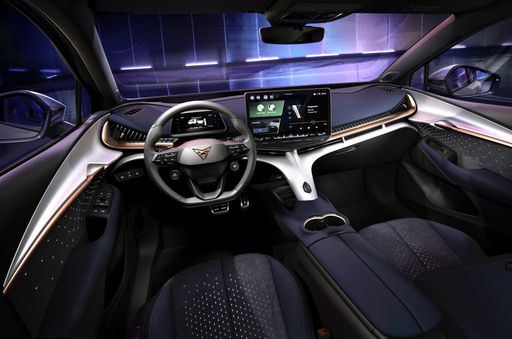 @ CUPRA / SEAT S.A.
@ CUPRA / SEAT S.A.
 @ Audi AG
@ Audi AG
|
 @ CUPRA / SEAT S.A.
@ CUPRA / SEAT S.A.
|
|
|
|
Costs and Consumption |
|
|---|---|
|
Price
39600 - 58800 £
|
Price
45700 - 49600 £
|
|
Consumption L/100km
-
|
Consumption L/100km
-
|
|
Consumption kWh/100km
15.9 - 17.4 kWh
|
Consumption kWh/100km
15.9 - 17.1 kWh
|
|
Electric Range
406 - 554 km
|
Electric Range
513 - 553 km
|
|
Battery Capacity
59 - 77 kWh
|
Battery Capacity
77 kWh
|
|
co2
0 g/km
|
co2
0 g/km
|
|
Fuel tank capacity
-
|
Fuel tank capacity
-
|
Dimensions and Body |
|
|---|---|
|
Body Type
SUV
|
Body Type
SUV
|
|
Seats
5
|
Seats
5
|
|
Doors
5
|
Doors
5
|
|
Curb weight
2035 - 2235 kg
|
Curb weight
2178 - 2273 kg
|
|
Trunk capacity
520 - 535 L
|
Trunk capacity
540 L
|
|
Length
4588 mm
|
Length
4644 mm
|
|
Width
1865 mm
|
Width
1861 mm
|
|
Height
1614 - 1632 mm
|
Height
1597 mm
|
|
Max trunk capacity
1460 - 1490 L
|
Max trunk capacity
-
|
|
Payload
505 - 515 kg
|
Payload
507 - 522 kg
|
Engine and Performance |
|
|---|---|
|
Engine Type
Electric
|
Engine Type
Electric
|
|
Transmission
Automatic
|
Transmission
Automatic
|
|
Transmission Detail
Reduction Gearbox
|
Transmission Detail
Reduction Gearbox
|
|
Drive Type
Rear-Wheel Drive, All-Wheel Drive
|
Drive Type
Rear-Wheel Drive, All-Wheel Drive
|
|
Power HP
204 - 340 HP
|
Power HP
286 - 340 HP
|
|
Acceleration 0-100km/h
5.4 - 8.1 s
|
Acceleration 0-100km/h
5.5 - 6.8 s
|
|
Max Speed
160 - 180 km/h
|
Max Speed
180 km/h
|
|
Torque
310 - 679 Nm
|
Torque
545 - 679 Nm
|
|
Number of Cylinders
-
|
Number of Cylinders
-
|
|
Power kW
150 - 250 kW
|
Power kW
210 - 250 kW
|
|
Engine capacity
-
|
Engine capacity
-
|
General |
|
|---|---|
|
Model Year
2023 - 2025
|
Model Year
2024
|
|
CO2 Efficiency Class
A
|
CO2 Efficiency Class
A
|
|
Brand
Audi
|
Brand
CUPRA
|
What drive types are available for the Audi Q4 e-tron?
The Audi Q4 e-tron is offered with Rear-Wheel Drive or All-Wheel Drive.
The prices and data displayed are estimates based on German list prices and may vary by country. This information is not legally binding.
